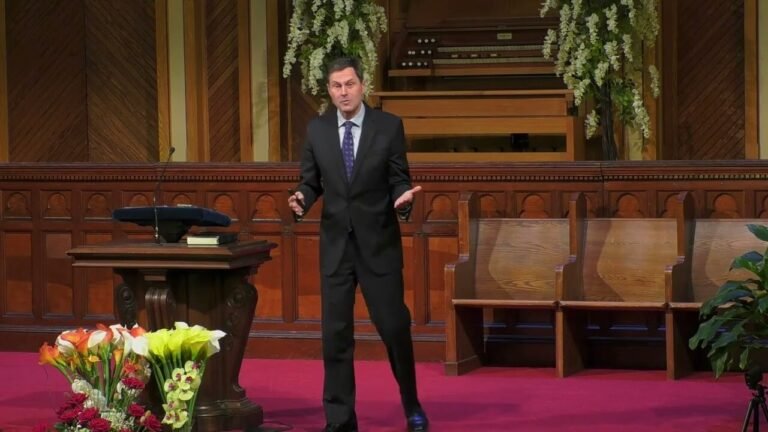Exploring the Significance of the Garden of Gethsemane in the Bible
The Garden of Gethsemane, a sacred site etched in biblical history, serves as a poignant backdrop to one of the most pivotal moments in the New Testament. Nestled at the foot of the Mount of Olives in Jerusalem, this serene olive grove witnessed the profound agony and resolve of Jesus Christ as he faced imminent betrayal and crucifixion. Rich in spiritual significance, the garden symbolizes both the weight of human suffering and the power of divine surrender, inviting reflection on themes of faith, sacrifice, and redemption. Exploring the Garden of Gethsemane offers a deeper understanding of its role in the biblical narrative and its enduring legacy in Christian thought.
What significance does the Garden of Gethsemane hold?
The Garden of Gethsemane is significant in the Bible as the place where Jesus prayed before his crucifixion, symbolizing anguish and submission to God’s will.
What events took place in the Garden of Gethsemane according to the Bible?
In the serene yet somber setting of the Garden of Gethsemane, Jesus faced a profound moment of internal struggle. Accompanied by his closest disciples—Peter, John, and James—he sought solace amidst the olive trees as he grappled with the weight of his impending crucifixion. This sacred place became a backdrop for a poignant dialogue between his human fears and divine purpose.
As Jesus knelt in prayer, his anguish deepened, revealing the depth of his humanity. He fervently asked for the cup of suffering to be taken from him, yet in the same breath, he embraced the necessity of fulfilling God’s will. This moment of vulnerability highlighted the tension between dread and acceptance, showcasing a deeply personal connection with the divine.
The disciples, despite their proximity, struggled to comprehend the gravity of the situation. They fell asleep while Jesus poured out his heart in prayer, underscoring the isolation he felt in that critical hour. The Garden of Gethsemane ultimately serves as a powerful testament to the dual nature of Christ—both fully divine and fully human—capturing the essence of his sacrifice and the unwavering commitment to his mission.
What was the reason Jesus selected the Garden of Gethsemane?
In the serene surroundings of the Garden of Gethsemane, Jesus found the solace and solitude he needed to confront the weight of his impending sacrifice. This sacred space offered him the privacy to pour out his heart to God, seeking not a release from his destiny, but the strength to embrace it fully. It was here, amidst the olive trees, that he wrestled with his mission, demonstrating profound commitment to fulfilling the divine purpose that lay ahead.
What was the reason Jesus prayed three times in the Garden of Gethsemane?
In the Garden of Gethsemane, Jesus’ three prayers serve as a powerful narrative device used by the author of Mark’s Gospel. Each prayer, lasting an hour, emphasizes the depth of Jesus’ anguish and the weight of his impending sacrifice. This structured portrayal not only highlights his humanity but also underscores the significance of his moment of vulnerability, as he seeks strength and solace in prayer amid overwhelming turmoil.
Mark’s intentional choice to depict this three-hour period reinforces the gravity of the situation, inviting readers to witness the profound struggle Jesus faced before his crucifixion. By illustrating the disciples’ inability to stay awake, the Gospel also contrasts Jesus’ unwavering commitment to his mission with the disciples’ physical weakness, ultimately enhancing the emotional resonance of the narrative. This poignant scene encapsulates the essence of Jesus’ dedication and the challenges of divine purpose in the face of human frailty.
Unveiling the Spiritual Depths of Gethsemane
Gethsemane, a serene olive grove at the foot of the Mount of Olives, serves as a profound symbol of spiritual struggle and redemption. It is here that Jesus faced his greatest anguish, grappling with the weight of humanity’s sins and his impending sacrifice. The tranquil surroundings starkly contrast the emotional turmoil he experienced, inviting visitors to reflect on their own journeys of faith and perseverance. As the ancient trees stand witness to this pivotal moment in history, Gethsemane transcends its physical presence, offering a timeless space for contemplation, healing, and a deeper understanding of the human connection to the divine.
A Sacred Space: Lessons from the Garden
In the heart of nature lies a garden, a sacred space that invites reflection and renewal. Here, amidst vibrant blooms and lush greenery, we discover the profound lessons that the earth has to offer. Each plant represents resilience, growing steadfastly against the odds, teaching us the importance of perseverance and adaptability in our own lives. As we tend to the soil, we learn to nurture not only the flora but also our inner selves, cultivating a sense of peace and purpose.
The rhythm of the garden mirrors the cycles of life, reminding us of the beauty in both growth and decay. Seasons change, and with them come transformations; what once thrived may wither, only to give way to new beginnings. This continuous process encourages us to embrace change and find beauty in every phase, understanding that each ending paves the way for fresh opportunities. It is in this ebb and flow that we gain wisdom, learning to appreciate the transient nature of our experiences.
Moreover, the garden teaches us the power of patience and mindfulness. Each seed sown requires time and care to flourish, urging us to slow down and be present in the moment. This sacred space invites us to disconnect from the chaos of daily life, allowing us to reconnect with ourselves and the earth. Through nurturing the garden, we cultivate a deeper understanding of our interconnectedness with nature, reinforcing the idea that we are all part of a larger tapestry, woven together by the threads of life.
Gethsemane: The Heart of Biblical Reflection
Gethsemane stands as a profound symbol of the human experience, capturing the essence of struggle, surrender, and the quest for divine connection. Nestled at the foot of the Mount of Olives, this sacred garden witnessed the poignant moments of Jesus’ anguish before his crucifixion, serving as a powerful reminder of the weight of sacrifice and the depth of faith. Here, amidst the ancient olive trees, the intertwining themes of hope and despair resonate, inviting believers to reflect on their own trials and the strength found in vulnerability. Gethsemane beckons us to embrace our inner turmoil, transforming our struggles into opportunities for spiritual growth and deeper understanding of our purpose.
The Garden of Gethsemane stands as a profound testament to the depths of human emotion and divine purpose, encapsulating the pivotal moments of struggle, surrender, and hope. Its rich biblical narrative not only invites reflection on the trials faced by Jesus but also encourages individuals to seek solace in their own moments of despair. As a sacred space of prayer and contemplation, the Garden reminds us of the transformative power of faith and the enduring strength found in vulnerability.







